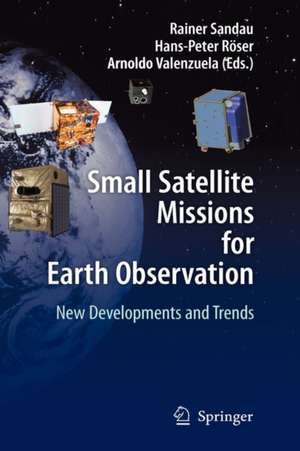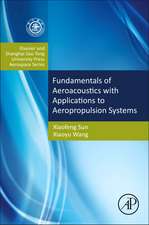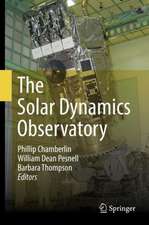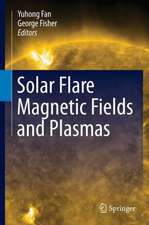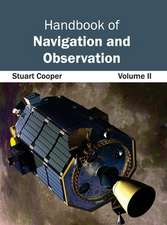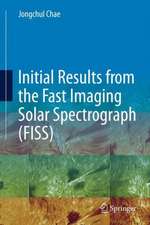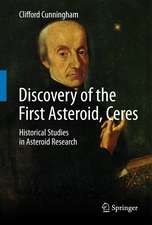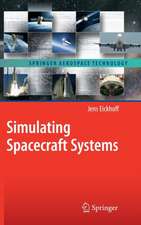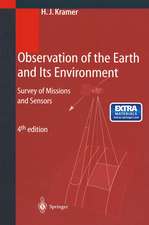Small Satellite Missions for Earth Observation: New Developments and Trends
Editat de Rainer Sandau, Hans-Peter Roeser, Arnoldo Valenzuelaen Limba Engleză Hardback – 17 feb 2010
| Toate formatele și edițiile | Preț | Express |
|---|---|---|
| Paperback (1) | 1175.01 lei 6-8 săpt. | |
| Springer Berlin, Heidelberg – 28 noi 2014 | 1175.01 lei 6-8 săpt. | |
| Hardback (1) | 1186.29 lei 6-8 săpt. | |
| Springer Berlin, Heidelberg – 17 feb 2010 | 1186.29 lei 6-8 săpt. |
Preț: 1186.29 lei
Preț vechi: 1446.70 lei
-18% Nou
Puncte Express: 1779
Preț estimativ în valută:
227.01€ • 239.82$ • 189.79£
227.01€ • 239.82$ • 189.79£
Carte tipărită la comandă
Livrare economică 01-15 ianuarie 25
Preluare comenzi: 021 569.72.76
Specificații
ISBN-13: 9783642035005
ISBN-10: 3642035000
Pagini: 508
Ilustrații: XX, 455 p.
Dimensiuni: 155 x 235 x 38 mm
Greutate: 0.89 kg
Ediția:2010
Editura: Springer Berlin, Heidelberg
Colecția Springer
Locul publicării:Berlin, Heidelberg, Germany
ISBN-10: 3642035000
Pagini: 508
Ilustrații: XX, 455 p.
Dimensiuni: 155 x 235 x 38 mm
Greutate: 0.89 kg
Ediția:2010
Editura: Springer Berlin, Heidelberg
Colecția Springer
Locul publicării:Berlin, Heidelberg, Germany
Public țintă
Professional/practitionerCuprins
New Earth Observation Missions.- Overview on CNES Micro Satellites Missions: In Flight, Under Development and Next.- Small Earth Observing Satellites Flying with Large Satellites in the A-Train.- INTA?Sat-1 First Earth Observation Mission.- VEN?S (Vegetation and Environment Monitoring on a New Micro Satellite).- The “Ulingo” Mid-Low Latitudes Observation (MILO) Mission.- The Italian Precursor of an Operational Hyperspectral Imaging Mission.- Earth Environment Missions.- Space System “Radiomet” for GLONASS/GPS Navigation Signal Radio Occultation Monitoring of Lower Atmosphere and Ionosphere Based on Super-Small Satellites.- The Study of Electromagnetic Parameters of Space Weather, Micro-Satellite “Chibis-M”.- SEPSAT – A Nanosatellite to Observe Parameters of Space Weather.- Small Satellite Constellations for Measurements of the Near-Earth Space Environment.- Distributed Space Systems.- Satellite Formation for a Next Generation Gravimetry Mission.- EO Small Satellite Missions and Formation Flying.- Relative Trajectory Design for Bistatic SAR Missions.- Conceptual Design of the FAST-D Formation Flying Spacecraft.- Earth Observation Using Japanese/Canadian Formation Flying Nanosatellites.- A Bi/Multi-Static Microsatellite SAR Constellation.- Mission Design of the Dutch-Chinese FAST Micro-Satellite Mission.- University Satellites.- SPRITE-SAT: A University Small Satellite for Observation of High-Altitude Luminous Events.- SwissCube: The First Entirely-Built Swiss Student Satellite with an Earth Observation Payload.- German Russian Education Satellite – Mission Outline and Objectives.- University Microsatellites Equipped with an Optical System for Space Debris Monitoring.- A First-MOVE in Satellite Development at the TU-München.- Design of a SmallEducational Satellite for the Italian High School Students: The EduSAT Project.- Testing of Critical Pico-Satellite Systems on the Sounding Rocket Rexus-4.- Laboratory Facility for Simulation and Verification of Formation Motion Control Algorithms.- Asynchronous Parallel Reactive System for Intelligent Small Satellite on-Board Computing Systems.- NanoSiGN – Nanosatellite for scientific interpretation of GNSS dual-frequency signals in the low Earth orbit.- Instruments and Technologies.- The Vegetation Instrument for the PROBA-V Mission.- Software Defined LFM CW SAR Receiver for Microsatellites.- PhytoMapper – Compact Hyperspectral Wide Field of View Instrument.- Development of Spaceborne Small Hyperspectral sensor HSC-III for Micro Satellite.- Towards a Miniaturized Photon Counting Laser Altimeter and Stereoscopic Camera Instrument Suite for Microsatellites.- A Plan of Spaceborne ISAR Satellite Imaging System Aiming at Space Objects.- Increasing the Data Volume Returned from Small Satellites.- Integrated Design Based Plug-and-Play Small SAR Satellite Project.- Attitude Control Systems.- Star Sensor Development Based on the TUBSAT Experience.- Small Sensors Big Choices.- Robust and Fault Tolerant AOCS of the TET Satellite.- Implementation of the T3?PS in the Delfi-n3Xt Satellite.- A Novel AOCS Cold-Gas Micro-Propulsion System Design and Applications to Micro and Nano Satellites.- Navigation.- Navigation Needs for ESA’s Earth Observation Missions.- Benefits of Galileo for Future Satellite Missions.- Differential GPS: An Enabling Technology for Formation Flying Satellites.- GPS-Based Relative Navigation in Earth Observation Missions Relying on Cooperative Satellites.
Notă biografică
Dr. Rainer Sandau, PhD 1997 and habilitation 1990, is Chief Scientist at the German Aerospace Center (DLR) in Berlin, Germany. He has over 25 years of experience in airborne and spaceborne remote sensing activities.
Prof. Dr. Hans-Peter Roeser is director of the Institute of Space Systems at the University of Stuttgart and head of the German SOFIA Institute.
Arnoldo Valenzuela Ph.D., Chief Scientific Officer, has served in this capacity at Media Lario Technologies since January 2004. From 1999 until 2003 he was president and CEO; and from 1995 to 1998, Dr. Valenzuela served as the Company's managing director. Prior to joining Media Lario Technologies, Dr. Valenzuela was director of scientific programs and responsible for business development and marketing strategy at Kayser-Threde GmbH, a German provider of complete space systems from launch to recovery.
Also in Germany, from 1971 through 1994, Valenzuela was senior scientist and leading investigator at the Max Planck Institut (MPE).
From 1986 until 1988, Valenzuela was president of the Argentine National Commission for Space Research. A board member of Argentina's National Commission for Space Research, Valenzuela was the Argentine representative to the Committee on Peaceful Uses of Outer Space within the United Nations' General Assembly.
Internationally recognized for scientific achievement, Valenzuela has garnered awards from the International Academy of Astronautics (2), NASA (2), and European Space Agency (1). He has three international patent applications and is an active member of the International Academy of Astronautics, Academy of Space Sciences: Argentina, and many professional scientific organizations.
In addition to his current responsibilities at Media Lario Technologies, Valenzuela serves as chairman of both the Commission IV and the Committee on Small Satellite Missions for the International Academy of Astronautics.
Valenzuela holds a Ph.D. in physics and a M.S. in physics from the National University of Cuyo, Argentina. He received a B.Sc. in electronics from the University of Córdoba, Argentina.
Prof. Dr. Hans-Peter Roeser is director of the Institute of Space Systems at the University of Stuttgart and head of the German SOFIA Institute.
Arnoldo Valenzuela Ph.D., Chief Scientific Officer, has served in this capacity at Media Lario Technologies since January 2004. From 1999 until 2003 he was president and CEO; and from 1995 to 1998, Dr. Valenzuela served as the Company's managing director. Prior to joining Media Lario Technologies, Dr. Valenzuela was director of scientific programs and responsible for business development and marketing strategy at Kayser-Threde GmbH, a German provider of complete space systems from launch to recovery.
Also in Germany, from 1971 through 1994, Valenzuela was senior scientist and leading investigator at the Max Planck Institut (MPE).
From 1986 until 1988, Valenzuela was president of the Argentine National Commission for Space Research. A board member of Argentina's National Commission for Space Research, Valenzuela was the Argentine representative to the Committee on Peaceful Uses of Outer Space within the United Nations' General Assembly.
Internationally recognized for scientific achievement, Valenzuela has garnered awards from the International Academy of Astronautics (2), NASA (2), and European Space Agency (1). He has three international patent applications and is an active member of the International Academy of Astronautics, Academy of Space Sciences: Argentina, and many professional scientific organizations.
In addition to his current responsibilities at Media Lario Technologies, Valenzuela serves as chairman of both the Commission IV and the Committee on Small Satellite Missions for the International Academy of Astronautics.
Valenzuela holds a Ph.D. in physics and a M.S. in physics from the National University of Cuyo, Argentina. He received a B.Sc. in electronics from the University of Córdoba, Argentina.
Textul de pe ultima copertă
This book was compiled from those contributions given at the 7th IAA Symposium on Small Satellites for Earth Observation, May 4-8, 2009, Berlin (IAA – International Academy of Astronautics) which are representative for the new developments and trends in the area of small satellites for Earth observation. They reflect the potentials of a diversity of missions and related technologies. They may be based on national projects or international co-operations, single satellites of constellations, pico-, nano-, micro- or mini-satellites, developed by companies, research institutions or agencies. The main focus is on new missions to monitor our Earth’s resources (chapter 1), and the environment in which our Earth is embedded (chapter 2). Chapter 3 deals with distributed space systems, the unique feature of small satellites. The university satellites chapter (chapter 4) shows the high quality which is already reached by some of the universities worldwide. Chapter 5 gives insight into new developments in the fields of instruments and technologies. The last two chapters (chapters 6, 7) deal with subjects, necessary to make use of the data coming from the satellite systems: attitude and position.
Caracteristici
Description of missions to be launched soon Prospects of future distributed space systems New instruments and technologies for small satellites Includes supplementary material: sn.pub/extras
